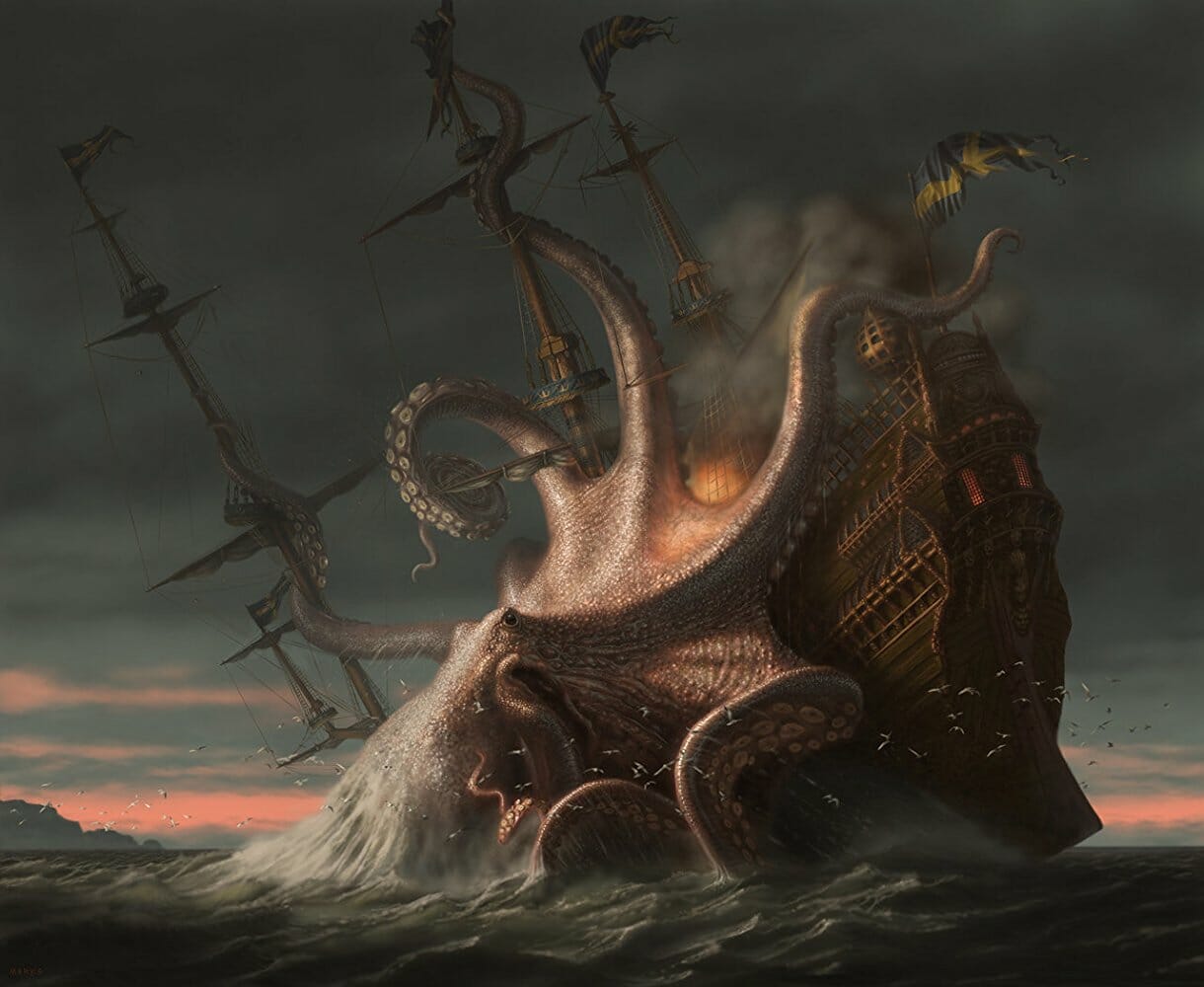By Shanee Edwards · January 30, 2018

If you’ve ever seen an episode of Bill Moyers’ show Joseph Campbell and the Power of Myth from 1988, where Moyers conducts intimate, in-depth interviews with Campbell, you probably began to look at stories in a new way. The show took a deep dive into mythic structure, revealing fascinating and even frightening things about why we tell the stories we tell.
Cut to 30 years later, we can now thank Netflix and Studio 3DD for Myths and Monsters, a new, gloriously insightful docuseries about storytelling that picks up where Moyers and Campbell left off. Myths and Monsters is wholly original, astoundingly well-conceived, includes interviews with story experts and is executed with gorgeous animation that brings the mythic stories to life.
This show is a must-see for any writer, no matter what genre you’re working in. From Star Wars to King Arthur to the sagas of the Vikings, the show explores many of our favorite Euro-centric myths and legends. We spoke with the show’s writer, William Simpson, to find out how stories reveal what it means to be human.
The most riveting topic in the show is monsters. All cultures have them and according to the show, monsters reflect the things we fear most inside ourselves. “The monsters that cultures create,” says Simpson, “always tell us something about their society or their individuals. Creating that monstrous other being – either to be destroyed or destroyed by – is not only a way to try to understand that fear or emotion but also to try to contain it. To make it safe. You take this thing you feel uncomfortable about and you put it over there.”
“The monsters that cultures create,” says Simpson, “always tell us something about their society or their individuals. Creating that monstrous other being – either to be destroyed or destroyed by – is not only a way to try to understand that fear or emotion but also to try to contain it. To make it safe. You take this thing you feel uncomfortable about and you put it over there.”
At the same time, Simpson says there’s a subversive quality about monsters. “You can kid yourself that the monster is outside yourself, but on a deeper level, you’re learning about something inside yourself or society.”
A good example is the sea creature in The Shape of Water. He is a symbol of “otherness” or that which is marginalized, whether it be someone who’s transsexual, an immigrant, or has a different color skin, he represents those people our culture fears.
Myths and Monsters also points out that if we look back at our favorite monsters, we can see how the myths around them have changed with each society over the centuries. “If you look at the vampire legend,” says Simpson, “which we touch on in episode six, it really shows how the culture has changed. Modern stories about vampires can be about the exclusion of gay people, things like that. The stories of Bram Stoker’s vampires are very different. The basic monster is the same, what they do is the same, but the issues they’re dealing with are radically different.”
“If you look at the vampire legend,” says Simpson, “which we touch on in episode six, it really shows how the culture has changed. Modern stories about vampires can be about the exclusion of gay people, things like that. The stories of Bram Stoker’s vampires are very different. The basic monster is the same, what they do is the same, but the issues they’re dealing with are radically different.”
A good example is how the Twilight books and movies use vampires to deal with sexual repression. A vampire’s bite takes the place of sex – there’s penetration (teeth going into flesh) and an exchange of bodily fluids (drinking blood). In today’s society, it’s acceptable to marry a vampire.
“Modern day takes on vampires are much more sympathetic to them,” says Simpson.
After researching and writing the project as a whole, there was one thing that really surprised Simpson. While Campbell’s Hero’s Journey has long been touted by filmmakers like George Lucas and Steven Spielberg as the best blueprint for telling stories, Simpson now believes that’s not necessarily the case.
“I think I learned to be rather more skeptical of [The Hero’s Journey] than I was before, to be honest.” Simpson says many myths and stories are far too strange and surprising to fit into one storytelling model.
Simpson says many myths and stories are far too strange and surprising to fit into one storytelling model.
“I think the Joseph Campbell theory, certainly in the way it has been taken on by Hollywood, with Christopher Vogler [author of The Writer’s Journey: Mythic Structure for Writers] and things like that, veers perhaps too much towards the universal. Perhaps you lose some of the more interesting quirks and the interesting historical reasons why myths work the way they do.”
For screenwriters, the moral of this story is not to put all your faith into one storytelling model, however tempting it may be.
“There’s so many books about [The Hero’s Journey], so many guides, so many how-tos, how not tos—and I understand. When you’re in the depths of act two and your characters aren’t doing what you want, things aren’t working out the way you want – having someone say ‘there is a model and if you follow this model you will have a perfectly wonderful story’ is very tempting, very attractive. But there’s a danger there, too. Don’t be too rigorous in following one model. There’s more than one path to storytelling.” All six episodes of Myths and Monsters are currently available on Netflix.
All six episodes of Myths and Monsters are currently available on Netflix.
For all the latest from The Script Lab, be sure to follow us on Twitter, Facebook, and Instagram
Images from 3DD Entertainment.